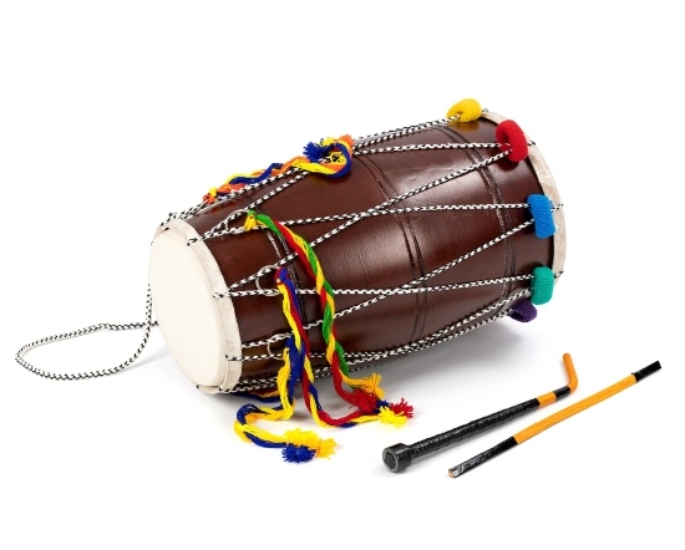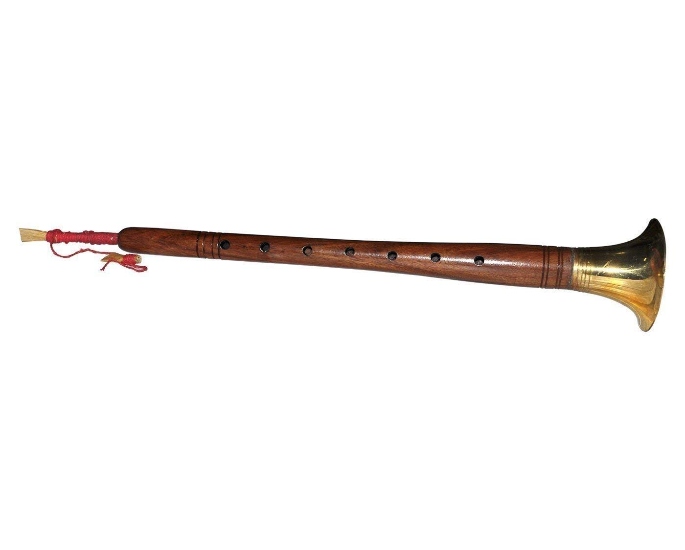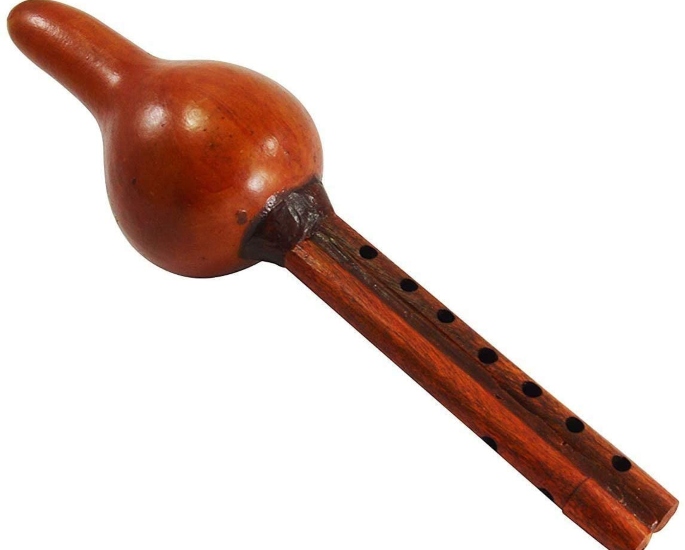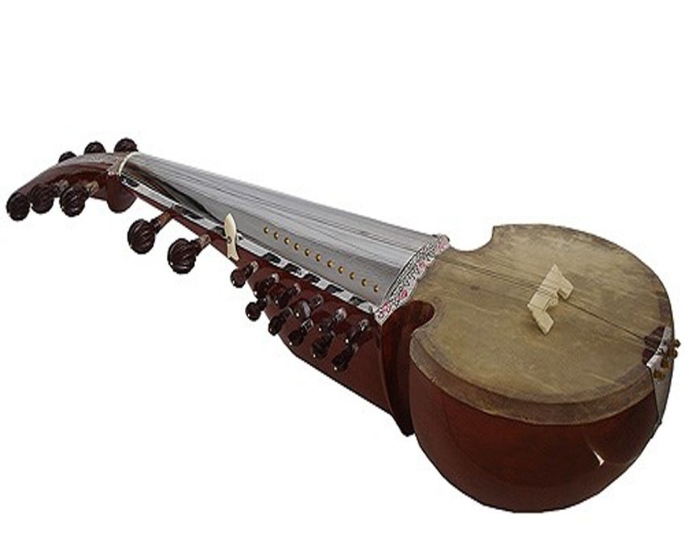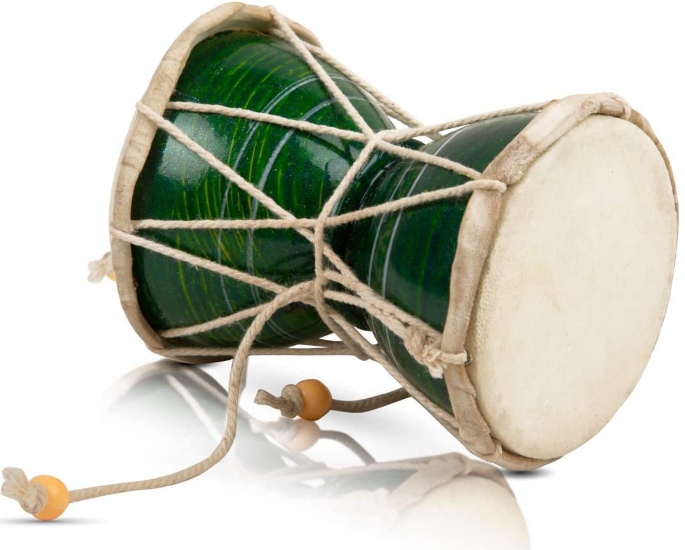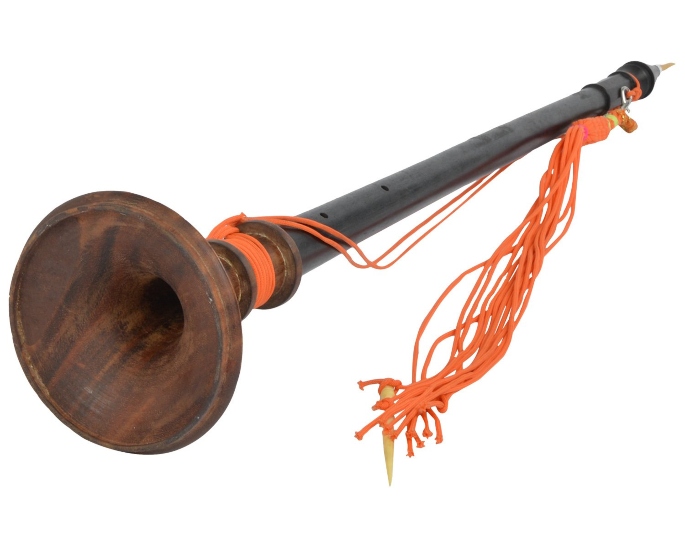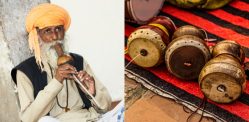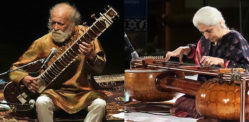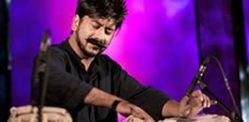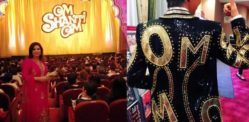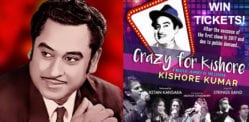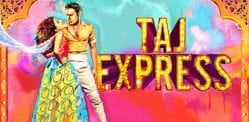"The flute as an instrument is a complete one."
Across India, every state has its own musical culture. Indian musical instruments play a vital role specifically in the sounds of South Asian music and dance.
These culturally rich instruments are very much associated with classical Indian music. However, Indian folk songs are the main genre where these pieces are shown off.
Folk songs and particular instruments carry traditional sentiments.
Each of these instruments is representative of localised cultures and provide an identity for a state or place in India.
The music of India is globally, nationally and locally appealing and the instruments used have significance in different genres.
From Bollywood to pop and classical performances, the Indian instrumental sounds immediately identify the music of South Asia.
Traditional music in India also has a specific space. Be it an Indian wedding, a small gathering or a function, certain instruments played are often associated with these celebrations.
Each Indian instrument has its own pleasant sound and history. We bring you a selection of very popular Indian musical instruments, which are unique in their own way.
Dhol
The dhol is a two-sided skinned drum instrument. Most interestingly, both sides of this instrument have different tones. One which is treble in its sound and the other bass.
The dhol is played with two sticks called a ’tilli’ and ‘dagga’, which are made out of bamboo or wood.
Traditionally, a dhol in the Punjabi culture has been a forte of men but today many women play the dhol as well.
The player wears the belt of the dhol around the neck for a proper grip, as it is heavy in weight. In Punjabi folk dancing, particularly, Bhangra, the dance is incomplete without the beats of the dhol.
There are some Bhangra steps that can only be performed to the beats of this instrument. It hails from the North Indian states such as Punjab, Himachal, Haryana, Jammu and Kashmir and Delhi.
However, similar forms of the instrument are also played in other states during big spiritual festivals.
Moreover, the dhol is popular across the world and has been used extensively in Bhangra music, especially in the UK.
The bass of the dhol has an essence of fun and energy that one cannot resist dancing to. This has led to an influx in demand in the modern generation of Indian and Bollywood songs.
On any Indian occasion, especially in North India, dhols are present. Without dancing to a dhol, no function can take place.
Algoza and Tumbi
The alogoza and tumbi are two different instruments but are usually played together in folk music.
The instruments belong to the North Indian region and are mostly used in Punjab.
Algoza is a two joined beak with wooden or bamboo flutes and also belongs to the domain of woodwind instruments.
One flute produces a melody and the other one produces a drone.
On the other hand, a tumbi is a single string high pitched instrument that has a very joyous sound.
It has a hard shell with a gourd shape mounted on the wooden stick and belongs to the string family of instruments.
Moreover, the sounds of an algoza and tumbi are so prevalent that one can listen to them in many popular Bollywood and Punjabi songs.
Gurmeet Bawa is a popular folk singer from Punjab who uses these instruments avidly.
Sitar
The sitar is one of the most famous Indian musical instruments, with it mostly played in South Indian regions.
In South India, classical music is highly popular, with the sitar being mainly used in Hindustani classical music.
It has a big gourd shell shaped like a head, mounted on the end of a long thick special toon wood. Moreover, a sitar can have 18, 19, 20 or 21 strings.
Since the 16th and 17th centuries, the appeal of the sitar has mounted and it is a focal point of Indian instrumentation.
The late Pandit Ravi Shankar shared his thoughts on playing different instruments, yet returning to this particular instrument:
“I always played many other instruments like sarod, flute, tabla, the sarangi, a bowed instrument, but I always came back to the sitar.”
Ravi Shankar Ji is one of the famous sitar artists known nationally in India and internationally. He has also played and taught the sitar at City College, New York.
His daughter Anoushka Shankar followed in his footsteps and had become a phenomenon in her own right.
A sitar is also seen in western music by David Crosby and many other singers. Interestingly, The HAARP Machine, a progressive metal band uses a sitar in the background for some of their songs.
Shehnai
Ustad Bismillah Khan is one of the most famous shehnai artists and the one who introduced it to the stage.
Although, the word shehnai comes from Turkish origin. ‘Sheh’ comes from ‘shah’ that means royal and ‘nai’ comes from ‘ney’, meaning a type of flute.
Shehnai is mainly played at South Indian or Hindu weddings. This is because the sound of this instrument produces and maintains auspiciousness.
This popular instrument in India is from the woodwind family. It is seen in the coastal Karnataka region.
This tubular instrument uniformly broadens towards the end like a bell. It also has six to nine holes along the pipe.
To master this instrument, an artist needs to practise detailed flipping and fingering techniques.
Moreover, not only is it used during auspicious occasions but it is played in some classical music.
Santoor
The santoor is an ancient time instrument that is a string-focused piece and a continuation of the Iranian santoor.
The trapezoid-shaped hammered dulcimer is usually made out of walnut or maple wood. An Indian santoor looks more rectangular in shape than an Iranian santoor.
It has 25 bridges, each bridge has a pair of four or three strings.
So, one santoor has a hundred strings in total. Moreover in ancient Sanskrit, it has been called ‘shatatantri vina’, which means ‘a hundred’.
It is a delicate instrument with a very ambient sound and is played with a pair of light wooden mallets.
The santoor is played by sitting in an ‘ardha-padmasana’ position, which means ‘half lotus’. One leg rests on top of the other giving players a stable position to let the instrument triumph.
It is used to play Sufi music in the Indian classical genre but the instrument is popular all over the world.
Shivkumar Sharma and Parviz Meshkatian are the famously known players of this subtle noted instrument.
Tabla
Tabla is a pair of drums and a very old instrument popularised in Indian classical music. The instrument is also known worldwide.
Sidar Khan Dhari, a court musician in the Delhi ‘darbar’ (court) in the 18th century is credited with inventing the tabla. Although, it is likely no single person is responsible for its creation.
Since the 18th century, the tabla has been playing not only in Hindustani classical music but also in modern generations of music.
Impressively, it is normally played by solo artists who use both hands simultaneously to slap, scratch and tap each drum.
Players are able to tune the tabla using the small wooden logs, which are lodged in between the straps. By moving them up and down, the pitch is adjusted for the desired sound.
Furthermore, Dr Zakir Hussain is famous as one of the best tabla players in the world. He has been playing it for fifty-five years and has followers in India, as well as America.
His father Ustad Allah Rakha was one of the most well-known tabla players in India. Zakir fondly talks about the influence of his father, saying:
“My father has been my guide, guru, mentor, father and friend.”
“He always told me, ‘beta (son), don’t try to be a master; just be a good student and you will get by just fine.”
This North Indian instrument is holding its renowned position as one of the most prolific pieces due to these tabla artists.
Pungi
A pungi, also known as a been, is an Indian folk music instrument. It is mostly used by snake charmers, especially in relation to cobras.
Although a pungi is now found everywhere, it originated from the Rajasthan region of India where one can find pungi players in deserted areas.
Along with charming snakes, it also charms one’s senses with folk melodies. In Rajasthani folk dance, a pungi is the most vital part for a composition to work.
Moreover, coming to its shape, a pungi is a very unique looking instrument. It is made with a mouth-blown air loch, which consists of a gourd that lets air pass through two reed pipes.
Most interestingly, the instrument is played without taking a pause, which means the player needs to employ continuous and circular breathing.
Usually, it is played solo as has both low and high pitches. It sounds like a continuous slow melodious humming.
Sarod
Sarod roughly translates to ‘melody’ or ‘sweet sound’ in Persian. It is a unique looking piece belonging to the string family.
According to Indian classical music scholars, a sarod is a combination of the ancient Indian instruments veena and medical rebab.
Sursingar is also a string domain instrument that belongs to early Indian roots. However, it is larger than the sarod and produces deeper sounds.
Also, as per writer Aarav Sahni, the instrument has been living in India for over a staggering 2000 years.
This emphasises how innovative it is and can still apply to the evolutions and changes within the music.
The sarod is mostly found in South India, especially in Tamil Nadu, Karnataka and Kerela, where it is called ‘swarbat’. Also, it is famous in North India.
A sarod is considered a royal Indian instrument because of its majestic sounds and notes.
Bansuri (Flute)
The Hindi word bansuri derives from ‘bans’, which means ‘bamboo’ and ‘sur’ that translates to ‘melody’. A special type of bamboo is used for making this single hollow instrument.
It has six or seven holes and produces two and a half octaves of music. Although the flute is found in different ancient cultures, the side-blown flute has only appeared in ancient India.
Ever since its beginning, the bansuri has made its noticeable presence in modern age music and for that reason, is on our list.
It may look simple but it takes years of experience to become a player.
Hariprasad Chaurasia, GS Sachdev, Deepak Ram and Ronu Majumdar are the popular flautists of India.
Basuri artist and music composer Hariprasad Chaurasia speaks about the completeness of the instrument:
“The flute as an instrument is a complete one.”
The bansuri sound is very relieving and some people listen to it while sleeping or meditating to help them relax.
Harmonium
It is said that the harmonium has a western background, especially with it appearing in French and German music.
However, in 2021, this instrument is certainly well associated with South Asia.
It is mainly used in India, Bangladesh and other Asian countries. Also, the harmonium is played in Indian classical, Qawaali and Sufi music, along with various other genres.
Furthermore, Dwarkanath Ghose, part of the leading instrument manufacturer in Calcutta, made it easy to play while sitting on the floor in 1875.
This is another reason why it is popular in Hindustani classical music.
It is a hand-pumped instrument and has a keyboard that is fixed with twelve half-tones of the tempered scale.
Moreover, the keyboard has all three octaves – mandya, madhya, and tara, encompassing airy notes as well as deeper tones.
Although, as per the Indian swara, which encompasses all Indian musical pitches, the keyboard could not produce a perfect swara.
So, the national network banned harmonium broadcasts from 1940.
Though Bade Ghulam Ali Khan, Begum Akhtar, and many other perfectionists raised their voices in support of the harmonium.
Since 1971, after the piece’s turbulent ride, it has become an insanely popular Indian instrument.
Dholak or Dholaki
Dholak is a both-headed drum instrument. It belongs to the Indian-subcontinent regions, mainly known in North Indian folk or traditional music.
The instrument looks like a dhol and has similar playing techniques but is smaller. It has a traditional cotton rope and a screw-turnbuckle on it.
It is also a very good instrument when it comes to entertainment.
At traditional Indian fairs, dholak or dholaki masters can gather a crowd with their amazing playing style.
Indian weddings blast the dholaki on the haldi and mehndi occasions, which are very important. Ladies play, sing and dance on the beats of dholaki.
The mango tree, coconut palm tree, or shisham tree are active ingredients in creating this wooden instrument, which is popular for its vibrant and attractive beats.
One cannot stop singing Indian folk songs, whilst playing the dholaki. Most interestingly, clapping with the rhythm of dholaki is complete fun.
Ravanahatha
Believed to have originated from the Sri Lankan Hela civilisation, the ravanahatha is thought to be the precursor to the violin.
The instrument dates back to around 2500 BCE, during King Ravana’s reign.
Consisting of a coconut shell bowl with a bamboo dandi (stick) attached to it, there are principal strings made of hair or steel and strung over a bridge.
The bow that accompanies it is also usually made out of hair. Coming in varying lengths, some specific bows can don bells that jingle whilst playing, giving more melodic and rhythmic sounds.
Highly popular throughout medieval India, the instrument oozes a royal aura.
In Rajasthan and Gujarat, the ravanahatha was the first musical piece to be learned by the princes.
Although the instrument slowly lost its appeal, it was reintroduced by Sri Lankan composer and violinist, Dinesh Subasinghe.
Using it across his catalogue, the instrument is especially prominent in Dinesh’s album Rawan Nada (2014).
Encompassing high-pitched strings and soulful harmonies, the project illustrates just how majestic this Indian musical instrument is.
Sarangi
The sarangi is a short-necked string instrument played in traditional folk and classical Hindustani music across India.
Although, it has also gained popularity in other countries such as Pakistan and Sri Lanka.
Usually carved from a block of wood, the instrument has a bridge that supports up to fourty sympathetic strings, made out of steel or brass.
The main three playing strings are thicker. Interestingly, this is because of the original material that was first used – the goat’s intestine. However, this is quite rare to find in 2021.
With the addition of tuning pegs and a bow made of hair, the sarangi can recreate nuances of the human voice.
Classic Indian vocalists like Bade Ghulam Ali Khan and Abdul Karim Khan were trained in the sarangi before taking on singing.
Both musically distinguished, the sarangi helped these historical artists in developing an appreciation of melody and transitions.
Additionally, it introduced artistic notes and tempo into their voices, which propelled their careers.
The emotions that this Indian musical instrument can produce is unfathomable. Listeners are captivated by sounds of humming, crying and melodious yearning.
Damaru
This small yet illustrious instrument is famous due to evoking spiritual energy when played, making the damaru a renowned tool within India.
The Met Museum in New York highlights the spiritual aspect stating:
“Its rhythmic reverberations, a primal sound of creation, move the cosmos in an ever-changing, endless dance.”
Typically made of wood, metal, and a leather head at both ends, it also has beads fastened to the leather cords, acting as the ‘strikers’.
The piece is played single-handedly.
The player, using a twisting wrist motion, hits the ‘strikers’ on the heads, creating a distinct sound that is used at weddings, parties, and sometimes in a band.
Shaped like an hourglass and no more than 7 inches high, the damaru is impactful and provides hits of bass during any performance.
Adored by kids, loved by adults, and utilised by musicians, this Indian musical instrument will leave people feeling uplifted and energised.
Rebab
The rebab is an instrument close to the guitar in terms of design and construction.
It was popularised around 1562 in Northern India by Tansen, a high-profile figure in classical Hindustani music.
The hollowed bowl has skin stretched over the top, with two bridges fixated on the neck and skin. Six strings are tied at both ends of the piece, allowing the player to adjust the sound seamlessly.
Moreover, ancient texts dating back to the 7th Century mention the formidable instrument. The additional relationship with Punjabi hymns provided a diverse use for the rebab.
With a range of two and a half octaves, the rebab is perfect for rhythmic elaborations and fast-paced patterns.
However, through modernisation, the rebab lost its appeal but did influence the development of the sarod.
Although the sarod is a staple within Indian musical instruments, it’s important to emphasise how the rebab laid out its early origins.
Mridangam
Mridangam is an Indian musical instrument that lends itself to the percussive sounds of South Asian music.
Interestingly, the name is made from the Sanskrit words ‘mrid’ and ‘ang’, which translates to ‘clay body’.
The earliest versions of the mridangam are believed to be made from clay, therefore, the name represents history.
Although the mridangam transitioned to wood, its musical qualities have also evolved. The two sides of the drum differ in shape, allowing for bass and treble sounds from one instrument.
Also, the angular shape and wooden dowels slipped under the tight leather straps control the skin tension, Hence, regulating the type of sound the drum makes.
Players stroke or hit each end with their hands and fingers. However, the real skill is in joining all the possible combinations for a glorious celebration of Desi notes.
Largely used in Carnatic music, the instrument is still a pivotal part of India.
Fusing the design and sounds of the dhol, dholak, and tabla, it is hard to ignore the effect this instrument can have on listeners.
Played by moguls such as Thiruvarur Bakthavathsalam and T. Nandakumar, the mridangam is a complex yet captivating tool that has engaged listeners for decades.
Veena
Temple scriptures and drawings dating back to the 2nd Century depict a type of veena being played, which show how historical this instrument is.
The comfort and diversity of the veena are unmatched. Although there are numerous versions across the regions of India, the main divisions are the Rudra veena, Saraswati veena and Vichitra veena.
Thus, offering a range of refreshing harmonies and vibrations, depending on which area of India one is in.
Famous veena musician, Jayanthi Kumaresh, an icon within Carnatic music, focuses on the touch element:
“Even if one sees or touches the veena, it bestows comfort both during and after one’s lifetime.”
The instrument can have a range from 1-100 strings, however, many veenas stick with four or five main playing strings and three secondary strings.
More impressively, the giant round resonator, which the instrument is known for is where the player conjures up their desired composition.
By using their intricate hands across the strings and the help of the tuning box at the narrow end of the veena, players put on an engaging showcase of Indian music.
Kanjira
The kanjira is the most simplistic-looking instrument on this list, but that does not take anything away from its music capabilities.
Resembling a tambourine, the kanjira has a wooden frame with a thin layer of leather stretched over it. There are two metal plates on either side, which offer a jingle every time the piece is stroked.
It cannot be extensively tuned in comparison to other pieces. However, the instrument is still versatile and used as a secondary percussion accompaniment at Carnatic concerts.
Although, the pitch can be lowered on a kanjira by wetting the inside of the leather face.
This interesting technique provides a unique sound, but it does make the pitch harder to control.
Therefore, proven geniuses like Natarajan Ganesh Kumar and V Selvaganesh are better equipped to handle such a remarkable instrument.
The hard-hitting motion required to achieve notable tones is highly mesmerising and is essential within Indian music.
Nadaswaram
The nadaswaram is a wind instrument similar to shehnai, however, it is much longer with a hard body and a large flaring bell at the end.
As one of the most popular classical pieces, it is deemed to be the “world’s loudest non-brass acoustic instrument.”
It has seven finger-holes and five additional holes, which can be modified to adjust the tone.
Additionally, it can go up to two and a half octaves like the bansuri flute, but the tones are transformed by the pressure of airflow into the pipe. When played, the pitches are soothing.
It has a certain echo that rings around the ears, creating a hypnotic aura and offering sensual imagery.
With careful breath control, musicians require a significant skill set to master this instrument. Illustrious players like Sheik Chinna Moulana managed to do this effortlessly.
Providing a foundation for the nadaswaram to thrive, intense musicians such as Thiruvizha Jayashankar continue to flaunt the instruments’ intensity and gripping strength.
Jal Tarang
The rarest yet most idealised instrument on this list is the jal tarang, otherwise known as the jalatharangam.
The ancient kit was developed around the 17th century and consists of up to twenty-two cups filled with water. The varying amounts of water in each cup deliver a specific sound.
Players softly hit the cups with a wooden stick, however, unlike other instruments, it is harder to tune the notes whilst playing.
If he/she is able to rotate the cups or modify the water whilst performing, then they’re considered to be an elite jal tarang player.
The motion of sound is prevalent with this instrument.
Instead of strings, pipes or hands, the desired rhythm is achieved through precision and by almost disrupting the flow of water, which is incredibly difficult.
However, artists such as Milind Tulankar and Dr Ragini Trivedi have illustrated why this instrument is loved.
The former did an impeccable Tedxtalk on how the jal tarang is so fascinating, artistic and important to Indian music.
The aquatic symphony of this instrument lends a refreshing hand to the more enriching soulful Indian instruments.
That’s not to say the jal tarang is not able to achieve the same emotion, but it cannot shy away from its refreshing and vibrant percussions.
These beautiful Indian musical instruments capture the beauty and essence of India and its culture.
Not only are they highly intricate, but each piece has a unique role in completing a composition or song, which individually, makes them special.
The construction and functionality allow these instruments to recreate the flavour and vibrancy of India whilst paying homage to the musicality of the country.
Whether it’s dancing at a wedding or basking in sounds at a concert, these tools achieve a spellbinding mix of elegant percussion, high-octave notes, and magnetic bass.




















































